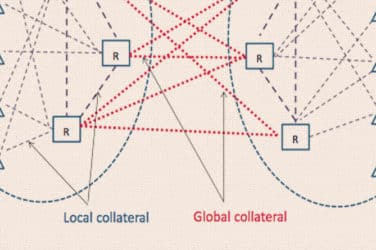
TARGET2-Securities, needs to provide better data in order for the benefits of the platform for harmonizing cross-border securities settlements in the Eurozone to be fully realized.
T2S allows settlement in central bank money across borders, central securities depositories and currencies so there is no difference between domestic and cross-border transactions. In T2S participants can use one cash and securities account for all T2S markets, which now have the same cut off times, allowing liquidity and collateral to be pooled.

Stephen Lomas, Deutsche Bank
Stephen Lomas, head of market policy global transaction banking at Deutsche Bank said in an interview with the European Central Bank that it would be helpful if the ECB and the central securities depositories could develop tools to better manage the benefits of T2S – such as being able to use a single commercial bank or central bank cash account across the T2S region, allowing real-time offsets in euro across markets and reducing liquidity required for intra-day settlement. In addition, T2S uses a common overnight cycle which operates on a net basis across markets which also reduces liquidity requirements.
“The T2S cash forecasts do not yet include all information on corporate actions or on exchange-trading activity,” said Lomas. “T2S is a great step forward, but cannot in itself answer all the collateral and liquidity needs of clients; collateral requirements are not limited to T2S markets, and need to be considered in a global context.”
He continued that participants also need to view client credit exposures, collateral provision and liquidity usage from a commercial perspective across the whole customer relationship, not just in relation to T2S markets.
“Clients are looking to work with providers who can bring the most beneficial aspects of T2S to their operating models, but who can also help them look beyond T2S to address their overall requirements as efficiently as possible,” said Lomas.
Last month Clearstream, Deutsche Börse’s international central securities depository, said volumes remain divided on national lines on T2S. Marc Robert-Nicoud, chief executive of Clearstream Holding said in a statement: “The harmonization objective requires both infrastructure development and a change in market behavior. T2S migration has not yet translated in market participants changing their model to take full advantage of the T2S benefits.”
The settlement platform began operating in 2015 after being launched by the European Central Bank in 2008 to end fragmentation in securities settlement across the Eurozone as the cost of cross-border transactions could be 10 times more expensive than domestic transactions. Clearstream was among the six migrating CSDs who joined T2S in February this year. As a result 18 CSDs, representing 16 markets have migrated to T2S, representing more than 80% of the total volume on the platform ahead of the fifth and last migration wave in September.
Since Clearstream joined T2S, volumes on the European Central Bank platform have doubled to 500,000 transactions per day. Clearstream added: “Cross-border activity in central bank money through T2S remains a small fraction of these volumes.”
Lomas is also chairman of the distributed ledger technology task force created by the Advisory Group on Market Infrastructures for Securities and Collateral to explore the impact of DLT on post-trade.
He said the group is looking at how potential technological change could impact T2S and the wider post-trade integration agenda, and will present a report in the middle of this year.
“Distributed ledger technology may in future help resolve some of the industry’s long-term issues, but before DLT solutions are more widely adopted within the post-trade world, or within the EU’s wider capital markets infrastructure, a number of conditions need to be met: establishing the legal nature of digital currencies and the information stored in digital ledgers; developing standards for interoperability; and creating a cohesive regulatory position on DLT applications, among other things,” added Lomas. “This will involve a great deal of work and time, but the potential benefits seem to be large and visible enough to be worth the effort.”


